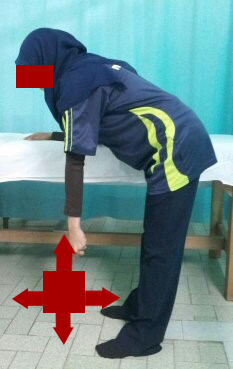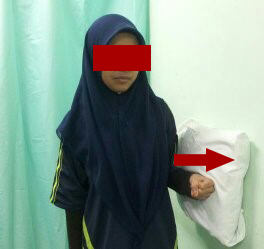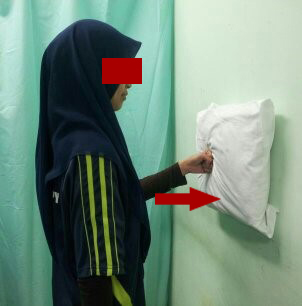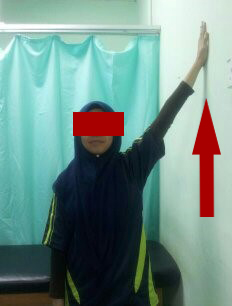What is Shoulder Dislocation?
The shoulder joint is a ‘ball and socket’ joint. The ball at the top of the arm bone (humerus) rotates and it fits into a cup-shaped socket at the outer part of the shoulder blade (the scapula) called glenoid. The shoulder socket is shallow which allows the shoulder to have a large range of movement and this makes it unstable and prone to dislocate during falls and forceful sporting activity.
When the top of the humerus moves out of its usual location in the shoulder joint, the shoulder is said to be dislocated. A related injury called a shoulder subluxation occurs when the top of the humerus is only partially displaced and not totally out of its socket.
There are two main types of dislocation:
• Anterior Dislocation: This is the most common type of shoulder dislocation. The top of the humerus is displaced forward, towards the front of the body.
• Posterior Dislocation: The top of the humerus is displaced towards the back of the body.
 |
| Source: http://orthopedics.about.com |
What are the causes of shoulder dislocation?
It takes a strong force, such as a sudden blow to your shoulder, to pull the bones out of place. Extreme rotation of your shoulder joint can pop the ball of your upper arm bone out of your shoulder socket.
A dislocated shoulder may be caused by :
• Sports injuries. Shoulder dislocation is a common injury in contact sports, such as football and hockey, and in sports that may involve fall, such as downhill skiing, gymnastics and volleyball.
• Trauma not related to sports. A hard blow to your shoulder during a motor vehicle accident is a common source of dislocation.
• Fall. You may dislocate your shoulder during a fall, such as falling from a ladder or from tripping on a loose rug.
What are the signs and symptoms of shoulder dislocation?
Dislocations hurt. When the humerus is forcibly pulled out of the socket, cartilage, muscle, and other tissues are stretched and torn. Commonly dislocation of the shoulder presented with :
• Severe shoulder pain.
• Limited motion of the shoulder.
• A distortion in the contour of the shoulder – In an anterior dislocation, the shoulder has an abnormal squared-off appearance instead of its typical sloping, rounded contour. In a posterior dislocation, the front of the shoulder may look abnormally flat.
• A hard knob under the skin near the shoulder – This knob is the top of the humerus that has popped out of its socket.
• Shoulder bruising or abrasions if an impact had caused the injury.
• As with other bony injuries, the pain may provoke systemic symptoms of nausea and vomiting, sweating, lightheadedness, and weakness.
What are the diagnosis for shoulder dislocation?
• Physical examination and inspection of the affected area for tenderness, swelling or deformity.
• An X-ray of the shoulder joint will show the dislocation.
How can Physiotherapy help?
Once the shoulder has been restored in its normal position the rehabilitation process can commence. To ensure full recovery, Physiotherapy will help to :
• Regain shoulder movement
• Strengthen the surrounding muscles
• Regain shoulder control
Provide initial relief of pain by using ice pack wrapped in a damp towel and placed on the shoulder for 10-15 mins can help to reduce shoulder soreness. Some patients prefer moist heat for pain relief.
What is the physiotherapy management for shoulder dislocation?
1. Modalities
Heat and cold therapy is applied to enhance relaxation and reduces pain. It is important to use ice after exercise and after any activity that causes discomfort. Pulsed electrical stimulation can also be used to relieve the pain. Electric stimulation will help to improve the blood circulation, thus enhancing the healing process and reducing any swelling or discomfort.
2. Exercise
The shoulder relies on strong muscles to stabilize the joint. It is extremely important to rehabilitate and strengthen the muscles of the shoulder to prevent recurrent dislocations. Physiotherapy exercises will ease shoulder discomfort and restore shoulder function. It is normal to feel some discomfort, aching or stretching when performing exercises.
i. Exercises (in the initial stage – patient wearing a sling)
• Performed 4 times a day (remove sling when doing exercises)
Self stretching of shoulder and neck muscle 1. Position : Standing 2. Instruction : Rest arms by the side and squeeze shoulder blades together, 10 secs hold 8-10 repetitions
Self stretching of shoulder and neck muscle 1. Position : Standing 2. Instruction : Rest arms by the side and squeeze shoulder blades together, 10 secs hold 8-10 repetitions
 |
 |
|
Self stretching of shoulder and neck muscle 1. Position : Standing |
Self pendular shoulder exercise 1. Position : Stooped standing 2.Instruction : Lean forward over a table and gently swing your arm : • Forwards and backwards • Side to side • Circular motions |
| Source: Unit Fisioterapi Hospital Raja Perempuan Zainab II, Kota Bharu |
Strengthening Exercises for Muscles Surrounding the Shoulder
 |
 |
| 1. Position : Standing against the wall 2. Instruction : Push elbow back Hold 10 secs 8-10 repetitions |
1. Position : Standing 2. Instruction : Pull hand towards the wall Hold 10 secs 8-10 repetitions |
 |
 |
| 1. Position : Standing beside the wall 2. Instruction : Push elbow away Hold 10 secs 8-10 repetitions each |
1. Position : Standing in front of the wall 2. Instruction : Push towards the wall Hold 10 secs 8-10 repetitions |
| Source: Unit Fisioterapi Hospital Raja Perempuan Zainab II, Kota Bharu |
ii. Exercises when sling completely removed
• To restore full independent shoulder movements.
 |
| 1. Position : Lying on your back 2. Instruction : Help your affected arm up and over your head with the assistance of your non-affected arm 8-10 repetitions |
 |
 |
| 1. Position : Standing facing the wall 2. Instruction : Walk up fingers up the wall aiming to get as high up of the wall as possible 8-10 repetitions |
1. Position : Standing with affected side to the wall 2. Instruction : Walk up fingers up the wall aiming to get as high up of the wall as possible 8-10 repetitions |
| Source: Unit Fisioterapi Hospital Raja Perempuan Zainab II, Kota Bharu |
3. Advice to patient
i Avoid sleeping with hand below the head.
ii Avoid lifting weights using affected limb.
iii Avoid extreme position of external rotation in abduction position.
iv Do not bear weight through the affected arm during getting up from the chair.
Other intervention for a dislocated shoulder
This may include further investigations such as ultrasound, CT scan or MRI, pharmaceutical intervention, and corticosteroid injection. Occasionally, patients may require surgery to repair the torn connective tissue or to correct other abnormalities associated with the dislocated shoulder (such as fractures).
References
1. Bret Sears (2014) Physical therapy after a shoulder dislocation http://www.physiotherapy.about.com
2. Haley Stevenson, Sherin Mathew (2011) Shoulder Dislocation http://www.pysio-pedia.com/shoulder dislocation
3. Jonathan Cluett (2013) Shoulder Dislocation http://orthopedics.about.com
4. John Miller (2015) Dislocated Shoulder: What is a dislocated shoulder http://www.pysioworks.com/.au/injuries-conditions/shoulder dislocation
5. L. Edward Seade (2014) Shoulder Dislocation treatment and management. http://www.emedicine.medscape.com
Source image
1. (2014) http://orthopedics.about.com/ Retrieved August 17, 2015
2. (2015) Unit Fisioterapi, Hospital Raja Perempuan Zainab II, Kota Bharu. Retrieved August 20, 2015
| Last Reviewed | : | 23 August 2019 |
| Writer / Translator | : | Halimah binti Hashim |
| Accreditor | : | Daaljit Singh Harbachan Singh |
| Reviewer | : | Halimah bt. Hashim |







